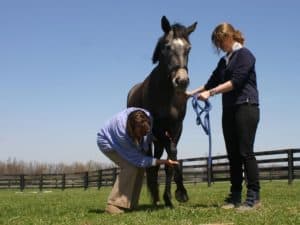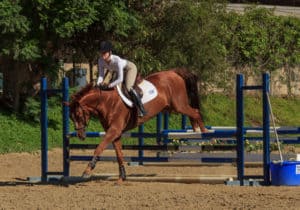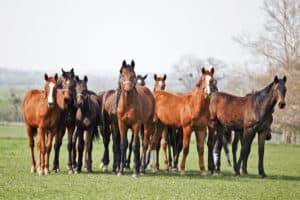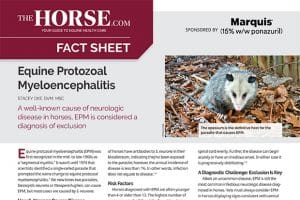
Is My Horse Neurologic or Lame?
Gait-altering conditions such as EPM, wobbler syndrome, and Lyme disease can be tricky to spot and even more difficult to diagnose.

Gait-altering conditions such as EPM, wobbler syndrome, and Lyme disease can be tricky to spot and even more difficult to diagnose.

Learn why this antioxidant is important for muscle health and how to supplement it safely.

Humans, not insects, are now the major source of equine infectious anemia (EIA) infections.

Find out what a veterinarian might look for when examining a horse that loses his balance after jumping a fence.

A poor outcome for a horse with EPM demonstrates the complexity of this neurologic disease. Read more in this article from The Horse‘s Summer 2023 issue.

Researchers know the typical clinical signs of EDM in horses but hope to uncover why it occurs, how to diagnose it in live animals, and potential treatment options.

Implementing these rehabilitation strategies might help improve your horse’s prognosis after a neurologic diagnosis.

Learn about the latest research surrounding the neurologic conditions equine neuroaxonal dystrophy (eNAD) and equine degenerative myeloencephalopathy (EDM).

A slow, steady, step-by-step approach helps veterinarians localize lesions in neurologic adult horses. Read more in the Fall 2023 issue of The Horse.

Equine neuroaxonal dystrophy (eNAD) and equine degenerative myeloencephalopathy (EDM) both plague the horse’s central nervous system.

Equine shivers can be a challenging disease to understand, but new study results have revealed important information about it.

These difficult-to-diagnose conditions can undermine a horse’s balance and coordination.

The decision about riding horses recovering from EPM and other diseases, one vet says, involves balancing rider safety, liability concerns, and animal welfare.

West Nile virus has infected more than 29,000 U.S. horses since 1999. Learn about the disease and how to protect your horses in this updated interactive feature.

Equine protozoal myeloencephalitis is a progressive and potentially fatal neurologic disease in horses caused by protozoal microorganisms, most commonly S. neurona. Sponsored by Marquis.

A veterinarian explains why antiprotozoals are unlikely to cause resistance among the protozoan parasites that cause EPM in horses.
Stay on top of the most recent Horse Health news with
© 2022 Copyright Statement dolor sit amet, consetetur sadipscing User Terms, sed diam nonumy eirmod tempor invidunt ut labore et dolore magna aliquyam erat, sed diam voluptua. At vero eos et accusam et justo duo dolores et ea rebum. Stet clita kasd gubergren, no sea takimata sanctus est Lorem ipsum dolor sit amet.
"*" indicates required fields